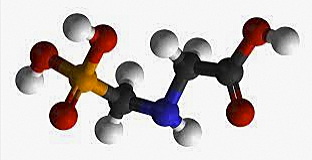
- Articles
Glyphosate, neurological diseases — and the scientific method
We must be careful not to rush to label glyphosate as excessively toxic to humans because when used properly and in proper quantities it is probably no more dangerous and toxic than other effective herbicides on the market. Unfortunately, most effective herbicides and insecticides could be classified as neurotoxic and carcinogenic because in high enough concentrations they can be toxic to biological systems. In their lengthy treatise, “Glyphosate, pathways to modern diseases III: Manganese (Mn), neurological diseases, and associated pathologies” recently published in Surgical Neurology International, Drs. Samsel and Seneff blame the widely used herbicide glyphosate for a number of ecological as well as medical disorders via Mn metabolism and a myriad of other pathophysiological mechanisms.[9] The linking of this effective herbicide to the alphabet soup list of conditions enumerated by the authors seems to be “shotgun science” — namely, multiple associations based on population-based statistics, disconnected correlations, and manipulation of numbers and conditions that create an epidemiological recipe for errors and nonvalid associations. The authors link every kind of disorder imaginable to a widely used chemical that has not been specifically linked clinically to any of those disorders.[9]
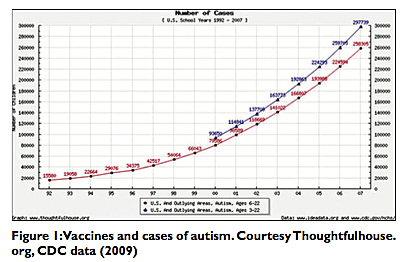
The massive weight of unconnected data presented by Drs. Samsel and Seneff in this paper fails to establish a definite association with glyphosate usage or Mn metabolism to autism or any of the other conditions implicated.[9] At best the link to autism is weak but not completely excluded as a co-factor with as yet unidentified other causes. Before we condemn glyphosate and its alleged mechanism of biological disruption in humans, in both alleged accumulation and depletion (both mechanisms are described by the authors), more data needs to be collected by actual fieldwork, testing, and experimentation. This hypothesis needs to be tested by other investigators under more direct and rigorous conditions for the variety of disorders listed by Drs. Samsel and Seneff.
Investigators must be wary of the various traps that befall epidemiological, population-based studies. First, for example, is the post-hoc, ergo propter hoc (“after this, therefore because of it”) fallacy. In other words, does a high level of a toxic substance cause a disease, or does it merely accumulate as the result of the disease or some other process? Was the high use of glyphosate noted to precede the increase in the number of cases of autism, Parkinson’s disease (PD), cholestasis, and Alzheimer’s disease (AD), etc., really responsible for those conditions? I think not, by the evidence provided by the authors. True, the authors have done a phenomenal amount of work and collected an impressive bibliography, but this of itself does not prove a cause and effect relationship.

The assertion, “(glyphosate) usage has increased steadily. In step with the rise in autism rates,”[9] proves nothing, but suggests the intrusion of a second related epidemiological error — e.g., the correlation-causation fallacy, a common error in logic stating that correlation does not establish causation. We can make statements for a variety of other substances and conditions, but in the end correlation does not establish causation. Similarly, along with the markedly increased use of glyphosate, there has been increases in the use of a number of chemicals, including other pesticides and herbicides (many of them already blamed for some of the same illnesses cited by the authors); there has been a protracted increase in medical uses of prescription drugs as well as the recreational consumption of illegal drugs; administration of large number of vaccines given to children possibly overtaxing the immune system and implicated in the rise of autism (particularly measles, mumps, and rubella [MMR], and vaccines that used the preservative thimerosal), etc. By similarly shaped graphs, we could cursorily implicate not only vaccines, but also the escalation of single parenthood and poverty, increased federal spending in welfare programs, even the growth of the organic food industry, not to mention the tremendous world population growth and overcrowding — as culprits for the increase in the variety of degenerative conditions and cancers cited by the authors during a similar period of time [Figures 1-5]. And yet, the authors have singled out glyphosate as the causative agent, not just for autism, but also for an alphabet soup list of conditions. And as we will see later, one of the authors (Seneff) asserts that we need to “act drastically,” implying, I suppose, imposing a ban on glyphosate. But even if the authors were on the right track, extreme caution should be exercised for reasons that will become obvious as we proceed further with this critique.
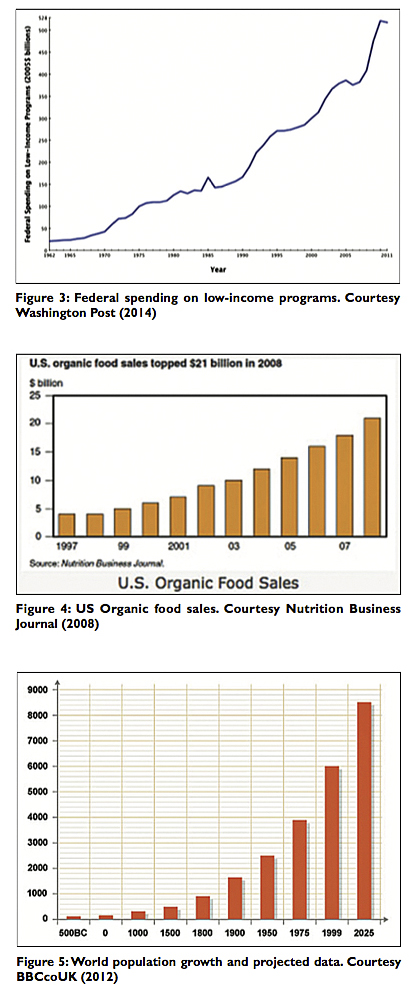
Drs. Samsel and Seneff state: “Many diseases and conditions are currently on the rise in step with glyphosate usage in agriculture, particularly on genetically-modified (GM) crops of corn and soy. These include autism, AD, PD, anxiety disorder, osteoporosis, inflammatory bowel disease, renal lithiasis, osteomalacia, cholestasis, thyroid dysfunction, and infertility.”[9] But as we have seen with Figures 1-5, the fact is that a myriad other pathologic and dysfunctional conditions have risen in society in step with glyphosate use — e.g., illegitimacy, broken homes, functional illiteracy, obesity, senility (and death from senility), as well as a number of neurological and degenerative conditions associated with our markedly aging population of Baby Boomers and the Gompertzian effect, whereby people are living longer and subject to diseases that they did not live long enough to suffer in the past. I discussed this paper with my friend Dr. Russell L. Blaylock, an authority in this area. He agrees with many of my criticisms in this critique but disagrees with a few points. For example, he discounts the Gompertzian effect stating, “the increase in many of the diseases is in a younger population and, in fact, the greatest increase of any malignancy is with lymphomas in those under age 30. We are also seeing neurodegenerative diseases that are occurring in younger people at an alarming rate.” Dr. Blaylock also cited anecdotal evidence for an increase in amyotrophic lateral sclerosis, which was rare at the time of our surgical residencies but seems more common today. And he adds, “the link between pesticide, herbicide, and fungicide exposure, and PD is a case in point, and there is good evidence of a link to AD.” But I remain skeptical. True, there is a lot of data out there, linking a variety of chemicals to a variety of conditions, but no convincing clinical evidence of causation relationship.
Any association between glyphosate and most of the conditions listed by Drs. Samsel and Seneff are doubtful with the evidence provided, and yet there is a statistical correlation in that they are all increasing, but this again does not establish a cause and effect relationship. We should wait for the science. How do we decide what is the true culprit when a myriad of other malefactors can be equally implicated? Consider the environmental challenges illustrated in Figures 6-10. Numerous other scientists have raised alarms and implicated those and other causes for ecological and public health challenges perceived as being, or proved to be, on the rise. How do we deal with all these conditions and activities, short of banning the human race from the planet?
As to autism specifically, a problem of the young, Dr. Seneff has already predicted that by the year 2025, half of the children will be afflicted with autism from glyphosate poisoning.[5] However, a newly released study in the Journal of the American Medical Association links autism, not to glyphosate, but to maternal diabetes.[13] Why should we then “do something drastic,” as Dr. Seneff advocates, singling out glyphosate and banning it, while ignoring the diverse list of other potential culprits such as harmful chemicals, environmental activities, and human conditions, including maternal diabetes, afflicting the human race?
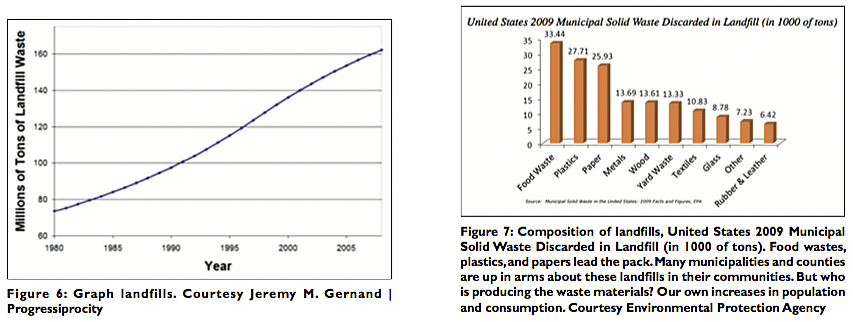
As to phobias, anxiety, and panic attacks — these psychoneuroses have increased along with a variety of the psychological stresses associated with a fast-paced, materialistic, and secular society, not to mention social, environmental, and economic conditions, as illustrated in the previous graphs. These anxiety disorders, like the other illnesses, need to be separated and individually tested.
The methodology employed by the authors is repeatedly assailed by the second previously cited epidemiological error, the correlation-causation fallacy — that is, correlation does not establish causation. Dr. Blaylock agrees with this and adds that this is “the weakest aspect of their paper,” but he qualifies the statement suspecting “stronger links with cancer and neurodegeneration.” Glyphosate usage has increased, and so has autism as well as the other conditions. Therefore, on this basis of association, the one supposedly causes the other. The epidemiological hypothesis is identified, but it is far from adequately tested, much less proven, by the data provided and the myriad of pathophysiological processes described by the authors.

In fact, there is no unifying pathophysiological hypothesis but a number of disconnected mechanisms that the authors attribute in one way or another to Mn, accumulation or depletion, with cellular damage.[9] At this juncture, Dr. Blaylock notes, “Mn is a powerful activator of microglia and can accumulate in certain brain areas — also, because there are multiple environmental sources, we should not add another one (from glyphosate metabolism if that turns out to be the case).” Independent confirmation by other investigators will be needed to establish the purported link between Mn and the various, and quite unrelated, clinical conditions cited. The sheer number of unrelated conditions cause the authors’ hypothesis to almost sink of its own weight, becoming too unwieldy for testing directly by the scientific method.[3,4,7]
Blaming glyphosate on the environmental problems and the myriad of medical conditions listed by the authors — that is, as “star wasting syndrome,” “collapse of coral reefs” via “ecological pervasiveness,” “liver damage,” “celiac disease,” “PD,” “anxiety syndromes,” “Salmonella poisoning,” “mitochondrial damage,” “poor sperm motility,” “poor bone development,” “phobias,” “osteoporosis,” “autism,” “AD,” “inflammatory bowel disease,” “renal lithiasis,” “osteomalacia,” “cholestasis,” “thyroid dysfunction,” “Lyme’s disease,” “panic disorders,” “infertility,” etc., — is unwarranted given the evidence, the variety of proposed mechanisms, and logic provided by the authors.[9] Dr. Blaylock and I agree that they should have concentrated on just a minimal number of diseases, where the evidence is more than circumstantial.
According to Drs. Samsel and Seneff, all of the above conditions are associated with Mn metabolism in the laboratory, but the evidence is not convincing that Mn disruption in so many different ways is caused by glyphosate utilization in the body, particularly in vivo, in man or animal. Nor do I believe the evidence is there to warrant the statement: “We further reason that, under conditions of adequate Mn in the diet, glyphosate, through its disruption of bile acid homeostasis, ironically promotes toxic accumulation of Mn in the brainstem, leading to conditions such as PD and prion diseases”[9] — except, perhaps, in huge doses given directly to laboratory animals, irrelevant to true environmental and existing conditions.
Furthermore, in this same context, the authors write: “The only study we are aware of that was a realistic assessment of the long-term effects of GM Roundup®-Ready corps and soy feed on mammals was the study by Séralini et al. that examined the effects on rats fed these foods for their entire lifespan. This study showed increased risk to mammary tumors in females, as well as kidney and liver damage in the males, and a shortened lifespan in both females and males. These effects occurred both in response to Roundup and to the GM food alone. These effects only began to be apparent after 4 months.”[9]
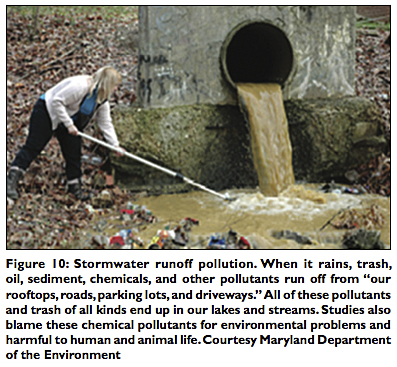
Thus, they also add carcinogenesis to the pot of pathologic conditions. While long-term follow-up is definitely important, the third erroneous concept that now enters the discussion must be considered. I refer to the phenomenon of hormesis — that is, the fundamental precept of pharmacology that “the dose makes the poison.” While some substances such as lead and cyanide are toxic at infinitesimal doses — and this is also true for a number of compounds, perhaps even pesticides, herbicides, and fungicides — most chemicals and natural substances become harmful only in higher, proportional pharmacological doses and quantities. In short, it is the huge doses, fed and ingested by these animals, that cause the carcinogenicity, not natural and normal feeding in their present environments. The doses made the poison!
We must also keep in mind a fourth factor that may have entered this study to cause further consternation, and that is, that the physiology and biochemical pathways of many laboratory animals are different from those in man, and therefore some animals make poor models for studying carcinogenicity and other pathological conditions in humans. The assumption that animal models can be used and always extrapolated to human conditions, generally referred to as ordinary induction, cannot generally be taken for granted. This does not mean that animal experiments are not of benefit. In most cases in fact they are and provide excellent models for human pathophysiology, but this fact must be ascertained and confirmed.
Nevertheless, although many chemicals and viruses that produce cancer in mice and rats often produce cancer in humans and vice versa, one cannot necessarily assume that the pathophysiology is identical and that all animal experiments can be uncritically extrapolated to humans. In the case of glyphosate, it supposedly affects the metabolic shikimate pathway, preventing the synthesis of aromatic amino acids. Since this pathway is reportedly used by plants only, it’s an effective herbicide. So at least by this pathway theoretically it should not affect animals or man. However, it could affect animal life by other pathways, if so, Drs. Samsel and Seneff, do not provide a convincing unifying hypothesis for this alternative pathway.[9] In our conversation, Dr. Blaylock objects at this point, stating that the toxicity of some pesticides/ herbicides in humans may occur by other pathways, as with nicotinic poisons. I agree with him on this point. But again this fact must be ascertained. Dr. Blaylock also surmises that “the glyphosate molecule may not be the most toxic component of Roundup, but rather it lies with the adjuvant added to the glyphosate.” But if that is true, then we are blaming glyphosate for the company he keeps and not because of intrinsic toxicity. And this reminds us of the need for better, and more strict, scientific methodology to isolate the true culprit(s).
A fifth factor of concern is that Drs. Samsel and Seneff take excessive license in making loose connections and associations between diseases and linking them firmly and erroneously to pathological conditions, when in fact the connections are tenuous or nonexistent. Examples abound in their long paper, but consider the association of panic attacks to PD and autism, not to mention the collapse of coral reefs. Because of this, their logic frequently does not follow and purported connections become tenuous or nonexistent. The separate number of conditions and pathophysiologic processes invoked and plied together attest to this observation. The authors have implicated glyphosate as a powerful neurotoxic, and indeed as an aminophosphonic analog of glycine and possessing a chemical structure similar to glutamate analogs,[9] glyphosate greatly enhances N-methyl-D-aspartate receptor sensitivity. Dr. Blaylock points out that this activity is sufficient to link it to neurological disorders and the risk of neurotoxicity. Yet, it must be noted that glyphosate lacks the neurotoxic modus operandi of organophosphate neurotoxins, which is via acetylcholinesterase inhibition and overstimulation of cholinergic receptors.
Drs. Samsel and Seneff write, “government regulators appear nonchalant about steadily increasing residue limits, and that the levels in food and water are rarely monitored by government agencies, presumably due to lack of concern.”[9] The fact is that since 1958 in the United States, businesses have been subject to the Delaney Clause by congressional legislation (i.e. Food Additive Amendment of 1958). The clause reads that the Food and Drug Administration (FDA) “shall not approve for use in food any chemical additive found to induce cancer in man, or, after tests, found to induce cancer in animals.”[6] That meant that the finding or addition of any amount of an alleged “carcinogen” at any dose, miniscule as it may be, is subject to the restriction. It was found after nearly 40 years of testing and experience that the strict requirement was not valid and not supported by science or clinical experience. In fact, we have had our share of needless alarmist food scares in relation to pesticides, herbicides, and food additives (e.g., cranberry scare of 1959, saccharin scare in 1981, alar scar in 1989, etc.).[6,10,11]
DDT is a more serious case in point. Not only did its banning result in the deaths of millions of people in Asia and Africa from malaria and other mosquito-borne diseases, but it resulted in the need for the development of pesticides with higher toxicity. Dr. Blaylock and I agree on this point; he admits, “In truth the banning of DDT was a gross mistake as it led to the mass production and use of agents infinitely worse, such as the organophosphate, organochlorines, and carbamates. The toxicity of DDT is in no way comparable to these newer agents.” In fact, one of my fears is that we could end up banning glyphosate on insufficient data, and then with the expected continued growth in the world population and less available land for cultivation, we could be saddled in the end with more toxic agents needed to replace it.
With the increasing necessity for the use of pesticides in agriculture, the Food Quality Protection Act of 1996 finally removed pesticides (found in processed foods) from being subject to the Delaney Clause’s absolute requirement. Nevertheless, there are stringent requirements still in place, reportedly “to be considered reduced risk, pesticides must have a proven low-impact on human health, have low toxicity to non-target organisms, and have a low potential to contaminate groundwater.”[10] These requirements affect herbicides as well and are still valid, but we certainly do not need to go back to the outdated 1958 absolute standards for herbicides or pesticides.
The Delaney Clause prohibition remains in place in other sections of the Food, Drug, and Cosmetic Act of 1938, amended in 1958[9] and 1996,[10] as it pertains to food additives, drugs in meat and poultry, and color additives. It is more politics than science that has kept some of the other tight regulations in place. The FDA Food Safety Modernization Act of 2010 even tightened preventive standards of food safety.[11]
Consider the fact sassafras, peanuts, sweet basil, etc., and many other fruits and vegetables, contain natural substances which are considered “carcinogenic” at pharmacologic doses injected into animals, but in the quantities found naturally in those beneficial plants are harmless. Still, no amount of safrole (found naturally in sassafras, nutmeg, cinnamon, etc.), for example, can no longer be added to root beer or other products in the United States, because of the remaining restrictions. Saccharin was retained as an artificial sweetener in the US only because of the widespread public outcry against its ban.
It has been countered that the support for the relaxation of the Delaney Clause was based on studies funded by the chemical manufacturers themselves. And this is true in some instances but not in others. And in this argument, I would like to play the devil’s advocate: Why are these investigators working for the chemical companies necessarily less reliable than their environmental counterparts, whose ecological zeal at times is profound, and no less prejudicial, than the purported financial considerations of their opponents? I have found in many instances that ideology and zealotry for some crusading causes are more intense and no less biased than financial incentives.
Finally, as it relates to glyphosate, I venture to say that by increasing the yield of agricultural produce around the world, glyphosate herbicide has provided a bounty of benefits to the global economy via crop yields and in ameliorating world hunger. It has been hypothesized that some of the surplus food we send to Third World nations is less nutritious than what we are allowed to consume in the West by regulatory agencies, and that in some cases this food aid reduces fertility in undeveloped nations and is, therefore, a form of population control. First, for those afflicted with famine and at the point of starvation, any edible food is a blessing. Any decrease in fertility is probably more related to endemic diseases, hunger, and chronic malnutrition than to any chemical by-products contained in the life-saving food supplied by Western nations. Overpopulation in Africa and Asia has been a manifest and insoluble problem, a serious problem that India, for example, has tackled but not solved satisfactorily. It would be a great tragedy to the ever-increasing world population needing to be fed, if we were to begin a premature or erroneous campaign of vilification against pesticides and herbicides that have undoubtedly ameliorated world hunger to a degree, which although difficult to exactly quantitate, has been certainly incalculable.
More studies employing scientific methodologies[3,4,7] with long-term follow-ups are needed and caution utilized in the use of glyphosate, and all the other herbicides and pesticides, that we continue to spill into the environment.
I’m in no way completely exonerating glyphosate and supporting its astronomical use as a harmless substance. It is not, and further studies need to be done, as mentioned. I also deplore two of Monsanto’s alleged business practices. One of them, as I have been told, is that of “their technological efforts with plants as to make them GM Roundup®-Ready, meaning the GM crops would require increasing concentrations of Roundup.” This has resulted in the increased amounts of glyphosate having to be used to obtain the same agricultural yield at increasing costs to farmers. Another is the terrible practice of “sterile seed technology,” or “terminator seeds,” whereby seeds are sterilized, genetically engineered, not to produce crops. This practice, I have been told, has destroyed the livelihood of many farmers, especially in Latin America and India, where crop yield is essential to subsistence farming and human life. Monsanto must have recognized the problem and has ceased producing these “terminator seeds,” stating on its website: “Monsanto made a commitment in 1999 not to commercialize sterile seed technology in food crops. We stand firmly by this commitment, with no plans or research that would violate this commitment.”[8] The publication of these articles and communications, perhaps, will also help eliminate and keep these deplorable practices in check.
We must be careful that in attacking corporations, for real or suspected evil practices, we do not lose the proper perspective and harm the very people we want to protect, the consumers, and increase the burden on the middle class, who ultimately pay the bills with more expensive products and litigation costs. I can speak as a consumer as well as a physician. I grow vegetables in my little garden and tend fruit trees, e.g., pears, peaches, apples, plums. Without a minimal use of fungicides and insecticides, I could not keep my fruit trees. Fungal diseases have, and would again, after a few days of rain, overwhelm my trees. Japanese beetles, tree borers, Asian moths, caterpillars, etc., have wiped out and would again destroy my little garden and vineyard! My wife and I have tried organic farming, it was impossible. Japanese beetle traps have been our only organic farming technique resulting in a clear victory. Two of my hunting friends, who are small farmers and keep cattle, agree with my assessment even more strongly. Their agricultural and cattle farm yields would perish, they assure me, without pesticides or herbicides. I suspect many businesses claiming to sell organic foods may be fraudulent. One should visit those farms to be reassured! Vegetables in smaller farms are possible with intense labor, but fruit trees are much more difficult to maintain. Costs also become prohibitive as well.
The freedom of choice that fortunately still exists in the marketplace of the Western world frequently responds to the legitimate medical information sooner, and not requiring the authoritarian streak of compulsion inherent to governmental regulatory agencies. At other times, the free market, and even the regulatory agencies, unfortunately respond to prematurely released medical information that turns out to be faulty. As a result, consumers frequently cannot be sure of the scientific validity of the medical information presented by the media, but the free enterprise system, using experience and trial and error, is able to separate the wheat from the chaff. Thus, good products survive; bad and sham items are ultimately discarded.
Consumers today can make the choice between buying cheaper GM Organism (GMO) products or more expensive non-GMO products. GMO stands for “GM Organism,” which refers to food and products derived from GM plants or animals. A whole industry of non-GMO products, from foods to textiles, has arisen as a result of the free enterprise system without the need of government compulsion.[12] Likewise, in the related industry of organic farming, more labor intensive and therefore more expensive produce — e.g., with government limits on the amount of pesticides, fungicides, and herbicides, including glyphosate — can be bought and consumed by those who value the alleged purity of organically grown products. Again the free market operates as best it can, voluntarily and without the need of government compulsory edicts. Government regulation has had its beneficial side, but we are probably regulating more than is needed.
Dr. Seneff calls for “drastic action,” but the fact is that unanimity as to the culprit(s) does not exist, and scientists have been arguing for years about the validity of the studies, both blaming and exonerating glyphosate and other chemicals for the lion’s share of culpability.[14] The jury is still out. How can we pass the sentence of banishment and prohibition without a guilty scientific verdict?
I categorically disagree with Dr. Seneff’s concluding remarks, “In my view, the situation is almost beyond repair. We need to do something drastic.”[5] We do not need to go and ban glyphosate with the evidence provided. We do not need to act urgently and incite lawsuits that consumers will end up paying for in higher food bills; farmers ending up with insufficient crops; and the poor and most vulnerable in societies worldwide, starving. What we need to do is to increase education and awareness in what we do know, and in concert with the findings and concerns of these authors, support the fact that more studies are needed, particularly pathological inspection of tissues with verifiable accumulation or deficiency of Mn and other toxic elements. Toxic damage of tissues in association with glyphosate usage must be documented.
More field and clinical, not just laboratory, work must be conducted. Foods that “presumably” contain excessive glyphosate amounts need to be tested to confirm if that is truly the case and demonstrate tissue and physiologic damage. And if glyphosate is found in processed corn and soy foods, then it must be ascertained if beneficial intestinal bacteria are affected causing nutritional deficiencies and other problems. Studies should make valid comparisons and show statistically significant associations, as well as verifiable data associated with specific glyphosate-related human conditions.
In the end, Dr. Blaylock stated in our conversation, “like you, I have great trepidations about this paper because it went too far, focused on too many pathological conditions, and as you demonstrate with great clarity, statements are made that cannot be supported by scientific methodology and the rules of logic.” I also agree with the informative commentary of Drs. Robin Mesnage and Michael Antoniou at the end of the paper indicating that several areas of glyphosate neurological interactions are in critical need of investigation,[9] but I disagree that the research efforts are urgently needed, if by that it’s meant we need to obtain data quickly and rush to publish conclusions. One of the regrettable trends in the contemporary rush for dissemination of scientific knowledge constitutes a sixth factor of error — namely, the rush to publish and the premature disclosure of scientific findings that frequently are misquoted by the popular press or the research findings themselves turn out to be invalid — needless to say, these occasions prove to be highly discomposing to the public and discreditable to scientific research.[1-4,7]
In short, we must establish factual cause and effect relationships, rather than promote fear mongering, food scares, and lawsuits. I do appreciate the authors’ incredible review of the literature and long bibliography, but compilation, again, does not prove a cause and effect relationship. The scientific method, and when applicable, the simple fulfillment of Koch’s Postulates of Pathogenicity do. In conclusion, I cite the words of a great British epidemiologist, Bruce G. Charlton, M.D., from the University of Newcastle upon Tyne, who in 1996 in the Journal of the Royal College of Physicians in London, summed up the state of population-based epidemiology:
There is a worrying trend in academic medicine which equates statistics with science, and sophistication in quantitative procedure with research excellence. The corollary of this trend is a tendency to look for answers to medical problems from people with expertise in mathematical manipulation and information technology, rather than from people with an understanding of disease and its causes.
Epidemiology [is a] main culprit, because statistical malpractice typically occurs when complex analytical techniques are combined with large data sets. The mystique of mathematics blended with the bewildering intricacies of big numbers makes a potent cocktail…
Indeed, the better the science, the less the need for complex analysis, and big databases are a sign not of rigor but of poor control. Basic scientists often quip that if statistics are needed, you should go back and do a better experiment.[7]
DISCLOSURES: I have received no monetary remuneration or any kind of benefits, perks, or employment from pharmaceutical, chemical or any type of company, including Monsanto, and have no conflict of interest, except as a consumer who has used this product for many years in my yard and would not like to see it banned unless glyphosate is found guilty as charged, judged by the scientific process and not by “reasoning” or data from frequently unreliable epidemiological-based studies.
ACKNOWLEDGMENT
The author wishes to thank Dr. Russell L. Blaylock for reading this manuscript and for his constructive criticisms of my critique. Nevertheless, the opinions expressed herein are my own, except where I directly quoted others. Any errors of omission or commission are solely my own.
REFERENCES
1. Blaylock RL. Regimentation in medicine and the death of creativity (Part 1). HaciendaPublishing.com, March 14, 2015. Available at: [Last accessed on 2015 Apr 10].
2. Blaylock RL. Regimentation in medicine and its human price (Part 2). HaciendaPublishing.com, March 20, 2015. Available at: [Last accessed on 2015 Apr 10].
3. Faria MA. Public health, social science, and the scientific method (Part II). Surgical Neurology 2007;67(3):318-322. Available from: [Last accessed on 2015 Apr 10].
4. Faria MA. Public health, social science, and the scientific method (Part I). Surgical Neurology 2007;67(2):211-214. Available from: [Last accessed on 2015 Apr 10].
5. Half of All Children Will Be Autistic by 2025, Warns Senior Research Scientist at MIT. Alliance for Natural Health, Dec 23, 2014. Available from: [Last accessed on 2015 Apr 16].
6. Merrill RA. “Food Safety Regulation: Reforming the Delaney Clause” in Annual Review of Public Health 1997;18:313-40.
7. Milloy SJ. Junk Science Judo: Self-Defense Against Health Scares and Scams. Washington, DC: Cato Institute, 2001, p. 73-74. Available from: [Last accessed on 2015 Apr 16].
8. Monsanto. Myth: Monsanto Sells Terminator Seeds. Available from: [Last accessed on 2015 Apr 16].
9. Samsel A, Seneff S. Glyphosate, pathways to modern diseases III: Manganese, neurological diseases, and associated pathologies. Surg Neurol Int 2015;6:45. Available from: [Last accessed on 2015 Apr 16].
10. U.S. Environmental Protection Agency. The Food Quality Protection Act of 1996. Available from: [Last accessed on 2015 Apr 16].
11. U.S. Food and Drug Administration. Background on the FDA Food Safety Modernization Act (FSMA). Available from: [Last accessed on 2015 Apr 16].
12. Working together to ensure the sustained availability of non-GMO food and products. The Non-GMO Project.org, 2015. Website: [Last accessed on 2015 Apr 16].
13. Xiang AH, Wang X, Martinez MP, Walthall JC, Curry ES, Page K, Buchanan TA, Coleman KJ, et al. Association of maternal diabetes with autism in offspring. JAMA 2015;313(14):1425-1434. Available from: [Last accessed on 2015 Apr 16].
14. Zuke E. Scientists shrug off attacks on Monsanto GM/cancer trial. The Grocer.co.uk, Sept 20, 2012. Available from: [Last accessed on 2015 Apr 16].
Article Written by Dr. Miguel Faria
Miguel A. Faria, Jr., M.D., served as member of the Injury Research Grant Review Committee of the Centers for Disease Control and Prevention (CDC; 2002-05). He is a retired Clinical Professor of Neurosurgery (Mercer University School of Medicine) and President of Hacienda Publishing, Inc.
This article was originally published in Surgical Neurology International and may be cited as: Faria MA. Glyphosate, neurological diseases — and the scientific method. Surg Neurol Int 2015;6:132. Available from: https://surgicalneurologyint.com/surgicalint-articles/glyphosate-neurological-diseases-and-the-scientific-method-2/
Copyright © 2015 Miguel A. Faria, Jr., MD